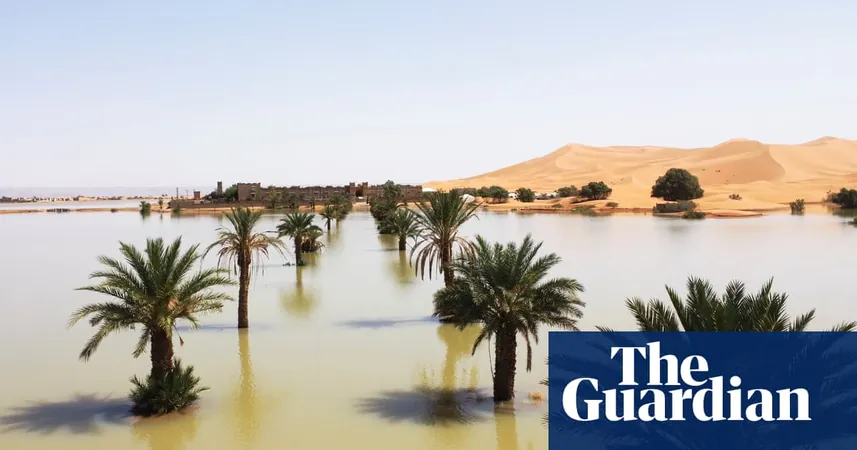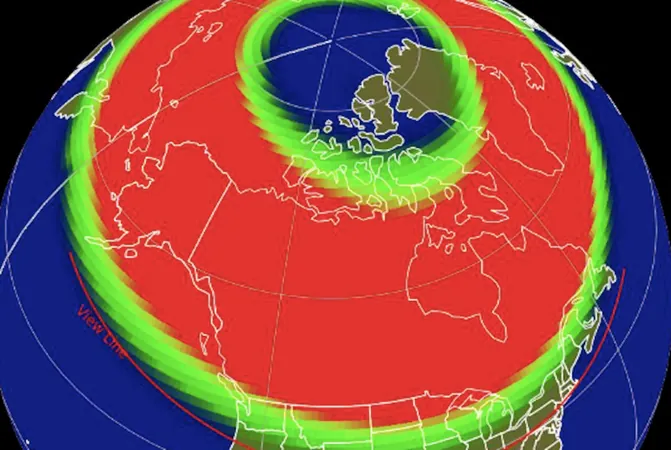
Unprecedented Floods Transform the Sahara: A Climate Crisis Unfolds!
2024-10-11
Author: Jacques
Dramatic pictures are surfacing, capturing the first major floods in the Sahara Desert in fifty years! This extraordinary event has left many in awe and concern as extreme weather patterns reshape the landscape of one of the world’s harshest environments.
In September, just two days of rainfall dramatically exceeded the annual averages in several areas of southeast Morocco, leading to severe flooding, according to officials from Morocco’s meteorology agency. In the village of Tagounite, located approximately 450 km (280 miles) south of Rabat, over 100 mm (3.9 inches) of rain fell within just one day!
NASA's satellite imagery revealed a shocking transformation: Lake Iriqui, a long-dry lake bed nestled between the towns of Zagora and Tata, has been refilled, showcasing the immense amount of water that fell during this extraordinary weather event.
“It’s been 30 to 50 years since we’ve experienced this volume of rain in such a short time,” stated Houssine Youabeb, an official at Morocco’s meteorological agency, in comments to the Associated Press. This unprecedented flooding has not been without its devastating consequences; the disaster claimed 18 lives last month and worsened the struggles in regions still reeling from a deadly earthquake last year.
The impact of these storms stretches beyond immediate devastation. Meteorologists are predicting that as air temperatures rise, so will moisture levels, which could lead to an increase in evaporation and further storm development in the coming months and years. In fact, the recent rains are classified as part of an extratropical storm system that may significantly alter the climate profile of the Sahara.
Celeste Saulo, the secretary-general of the World Meteorological Organization, emphasized the growing changes in water cycles around the globe. “Due to rising temperatures, the hydrological cycle has accelerated and become increasingly erratic,” she noted. This shift leads to growing challenges with either excessive rainfall or drought, hitting vulnerable regions particularly hard.
With the Sahara covering an expansive area of 9.4 million square kilometers (3.6 million square miles) across multiple African nations, the implications of these floods are vast. Many countries in the region have been grappling with recurring droughts, worsened by climate change, prompting scientists to warn about the likelihood of more extreme weather events, including similar storms, in the future.
The Sahara's transformation from a landscape of dryness to moments of intense flooding serves as a stark reminder of the global climate crisis. As we witness these dramatic shifts, one question remains: How will these changes reshape life in one of the harshest environments on Earth? Stay tuned as we monitor this evolving situation!









 Brasil (PT)
Brasil (PT)
 Canada (EN)
Canada (EN)
 Chile (ES)
Chile (ES)
 España (ES)
España (ES)
 France (FR)
France (FR)
 Hong Kong (EN)
Hong Kong (EN)
 Italia (IT)
Italia (IT)
 日本 (JA)
日本 (JA)
 Magyarország (HU)
Magyarország (HU)
 Norge (NO)
Norge (NO)
 Polska (PL)
Polska (PL)
 Schweiz (DE)
Schweiz (DE)
 Singapore (EN)
Singapore (EN)
 Sverige (SV)
Sverige (SV)
 Suomi (FI)
Suomi (FI)
 Türkiye (TR)
Türkiye (TR)